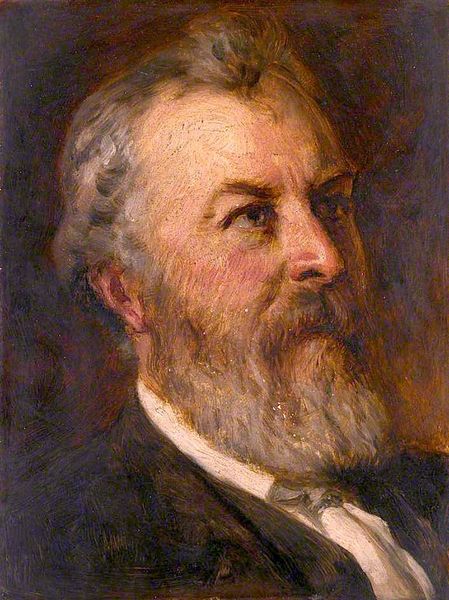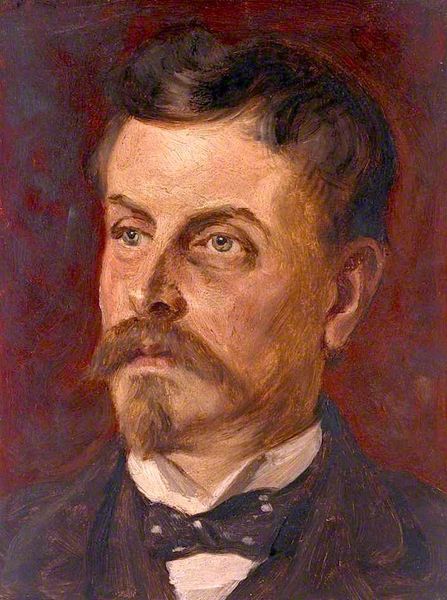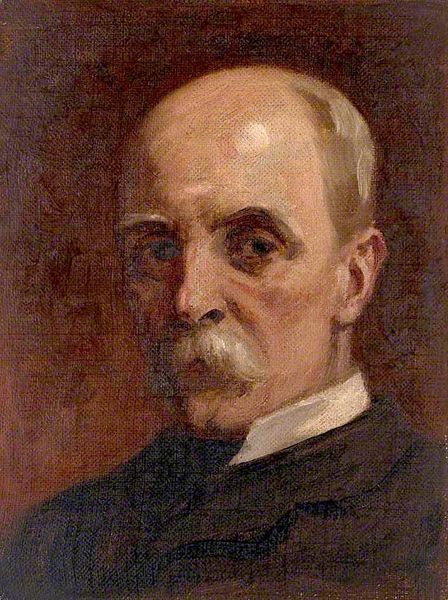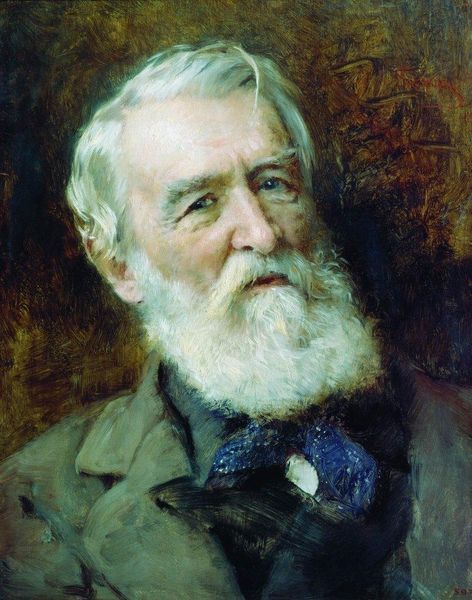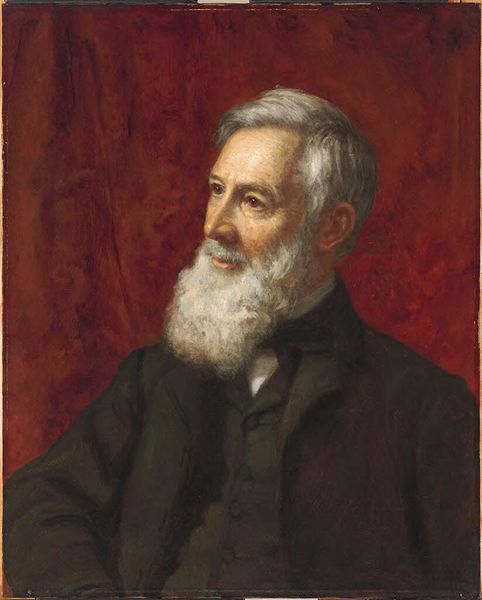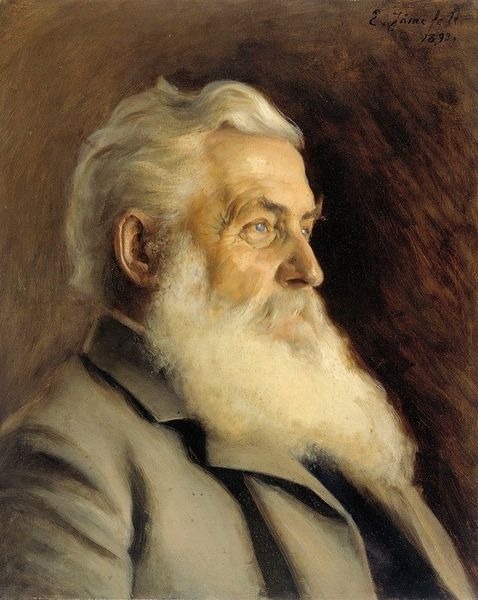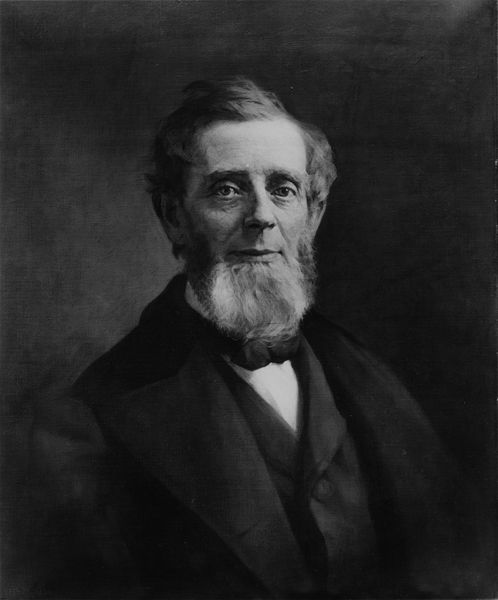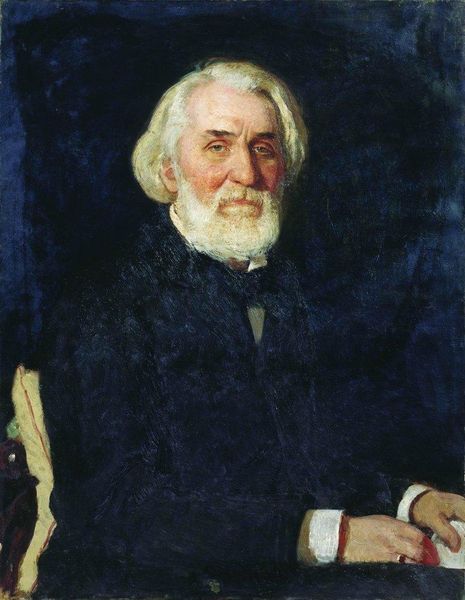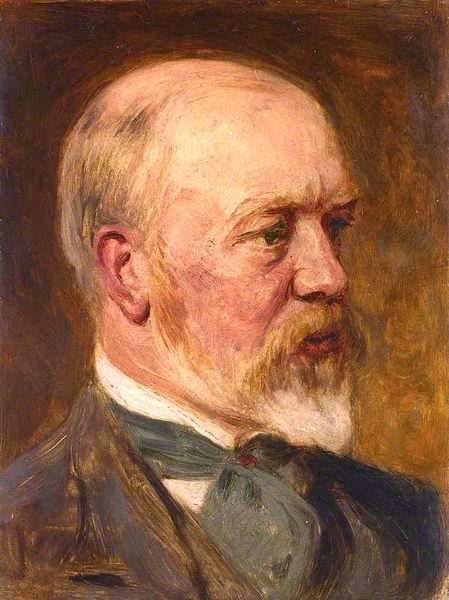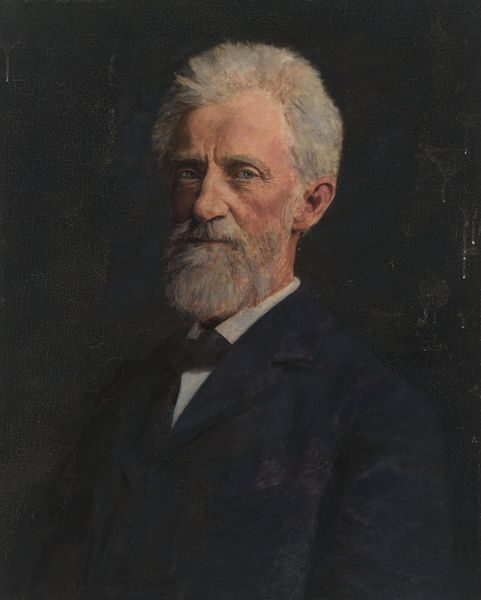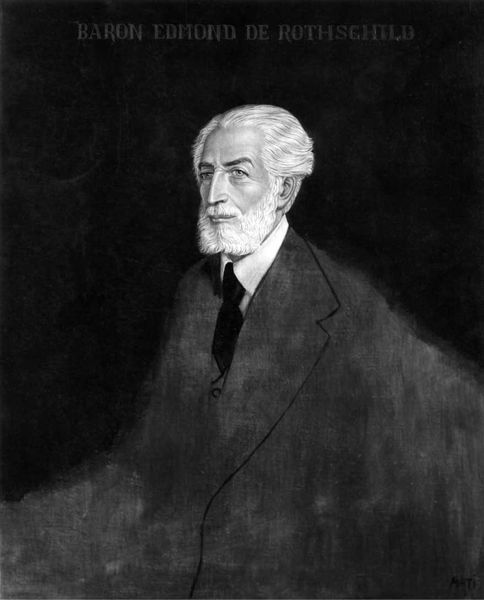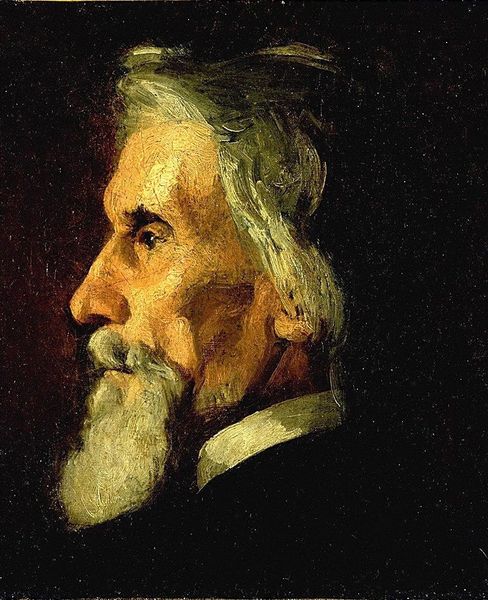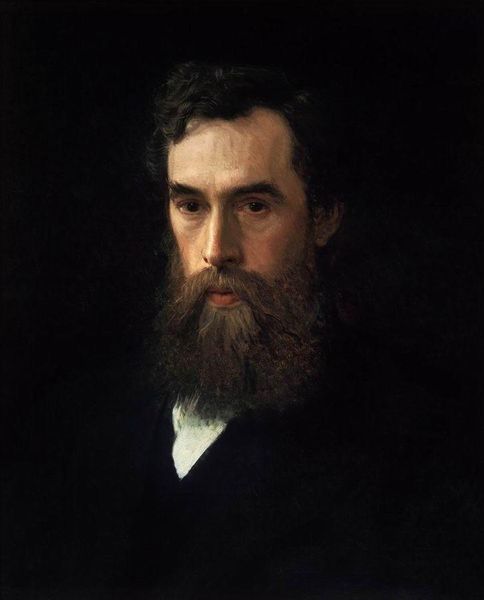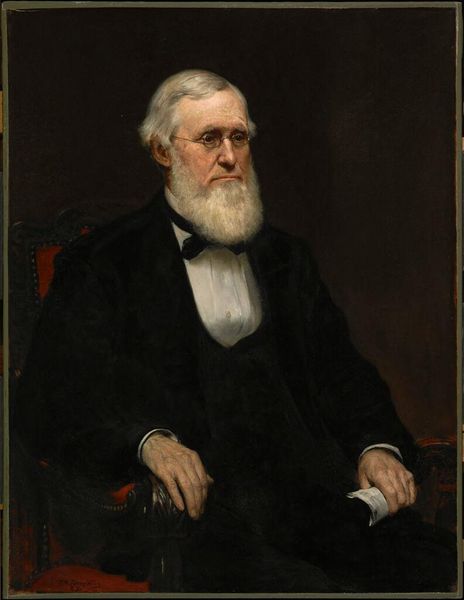
Copyright: Public domain
Editor: So, this is James Archer's self-portrait from 1900, an oil painting. It's quite intimate; you can see every wrinkle. There’s a stillness about it that's compelling. What do you see in this piece, from a historical perspective? Curator: I'm drawn to how this self-portrait engages with the prevailing notions of artistic identity around 1900. Consider the social role of the artist at this time – the late Victorian era. Artists were seeking validation, aiming to elevate their status through institutions and public perception. Does this image challenge or conform to the image of a successful artist? Editor: Well, he's presenting himself quite seriously, almost formally. He’s got a beard, almost like the professors that would’ve been around at the time. Maybe he’s trying to show respectability? Curator: Precisely. This self-presentation tells us about the social currency of artistic identity then. Archer is presenting himself as a professional, educated man. What visual cues reinforce this for you? Think about the subdued colors, the tight framing… Editor: Right, it's not flamboyant at all, which some artists are portrayed as. This is much more reserved and…dignified, I guess. Almost a calculated public persona? Curator: Exactly! The self-portrait is less about pure self-expression and more about negotiating his position within a specific cultural and institutional landscape. How do you think museums influenced artists at that time? Editor: I hadn’t considered it that way before! Now I see the artist as trying to gain cultural capital by performing a specific identity in the painting itself. Thanks! Curator: It shows how even a seemingly personal artwork can be a deeply social and historical document, doesn’t it?
Comments
No comments
Be the first to comment and join the conversation on the ultimate creative platform.
